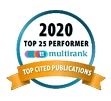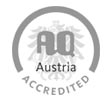Research Center of New Media Technology
RAVEN
Relation Analysis and Visualization for Evolving Networks
FIT-IT Semantic Systems Research Project
News
- 01 Jan 2008: Start of the Project
- 26 Feb 2008: 3rd Prize at FIT-IT Award Ceremony
- 05 Jun 2009: First Public Release of RAVEN Technology (Relaunch of the Media Watch on Climate Change)
Goals and Motivation
As the common name for what is widely considered the smartest species of birds, RAVEN is a fitting acronym for the scalable knowledge management and business intelligence platform underlying this research project. In Norse (Scandinavian) mythology, the two ravens Hugin and Munin – thought and memory, respectively – scout for the father of the gods Odin, keeping him up-to-date about the unfolding of events in the nine worlds. While the RAVEN research project targets mere humans, its intentions are similar – keeping users, analysts and decision-makers up-to-date about the unfolding of events in endogenous and exogenous information spaces, which themselves reflect interconnected events and processes of the real world. RAVEN aims to understand the evolution of these spaces by analyzing temporal-semantic relations between their elements.
RAVEN combines storage and distributed file-level intelligence data with application-level data from enterprise portals to build a comprehensive semantic repository of an organization’s information assets. It will add a social layer by enabling users to release non-confidential interpersonal messages to this repository, and by extracting Microformats, RDFa and RDF annotations from retrieved documents. Third-party resources will be added through a Web mining and media monitoring platform, which will be augmented by fine-grained incremental mirroring capabilities.
RAVEN will then determine trends in the frequency and semantic orientation of tokens, terms and concepts within this composite information space built from endogenous and exogenous sources. Ambiguity and subtle incremental change of tonal expressions between different versions of a document complicate sentiment detection and often prevent promising algorithms from being incorporated into commercial applications. RAVEN will use a spreading-activation based approach to address these concerns, increase reliability and make sure that every text fragment can be tagged irrespective of its length. The resulting annotations can then be used to control data flows or backup priorities within an organization, for example, or to track media coverage on a recently launched product line. Animated visualizations of temporal-semantic relations will help analysts comprehend and utilize very large data sets comprising millions of documents. To accommodate additional annotations in the visual representation, an AJAX framework will embed temporal controls into ensembles of tightly coupled views in multiple-screen setups. RAVEN will use this framework investigate the benefits of spherical geometries for user interface design, and provide add-on components to use virtual globes as generic image rendering engines for various types of data.
Deploying these computationally expensive algorithms requires a distributed architecture built upon independent services for large clusters of commodity hardware. To build semantic repositories and let users visually explore their temporal-semantic relations in real time, RAVEN needs to address scalability issues on the algorithmic level, as well as on the system and application levels.
2009
- Sabol, V., Kienreich, W., Muhr, M., Klieber, W., and Granitzer, M. (2009): "Visual Knowledge Discovery in Dynamic Enterprise Text Repositories", Proceedings of the 13th International Conference on Information Visualization (IV-2009). Barcelona: IEEE Computer Society.
- Muhr, M. and Granitzer M. (2009): "Automatic Cluster Number Selection using a Split and Merge K-Means Approach", Text Information Retrieval Workshop (TIR-2009), Proceedings of 20th International Conference on Database and Expert Systems Applications (DEXA-2009). Linz: IEEE Computer Society.
- Gindl, S., Scharl, A., and Weichselbraun, A. (2009): "Grammar Patterns and Multilingual Tagged Dictionaries for Sentiment Detection", Proceedings of the 14th Portuguese Conference on Artificial Intelligence (EPIA-2009). Aveiro, Portugal. Under Review.
- Gindl, S., Scharl, A. and Weichselbraun, A. (2009): "Generic High Throughput Methods for Multilingual Sentiment Detection", Information Processing and Management. Under Review.
2008
- Gindl, S. and Liegl, J. (2008): "Evaluation of Different Sentiment Detection Methods for Polarity Classification on Web-Based Reviews", 18th European Conference on Artificial Intelligence (ECAI-2008), ECAI Workshop on Computational Aspects of Affectual and Emotional Interaction, Patras, Greece.
- Sabol, V. and Scharl, A. (2008): “Visualizing Temporal-Semantic Relations in Dynamic Information Landscapes”, Semantic Web Meets Geospatial Applications Workshop at the 11th International Conference on Geographic Information Science (AGILE-2008). Girona, Spain: AGILE Council.
- Scharl, A., Weichselbraun, A. and Gindl, S. (2008): "Building Tagged Linguistic Unit Databases for Sentiment Detection", 8th International Conference on Knowledge Management (I-Know '08), Graz, Austria.
- Weichselbraun, A., Scharl, A. and Liu, W. (2008): “Capturing and Classifying Ontology Evolution in News Media Archives”, 19th International Conference on Database and Expert Systems Applications (DEXA-2008), 7th International Workshop on Web Semantics. Turin, Italy.
- Scharl, A. (2008). Exploring Environmental News via Geospatial Interfaces and Virtual Globes. NATO Advanced Research Workshop on Geographical Information Processing and Visual Analytics for Environmental Security. R.D. Amicis et al. Trento, Italy: Springer.
MODUL University Vienna – The Department of New Media Technology develops media monitoring and business intelligence applications, with a special emphasis on information retrieval and information extraction. Among the departments’ primary drivers of innovation are geospatial Web technologies, Web mining applications and visual analytics.
Vienna University of Economics and Business Administration – The Research Institute for Computational Methods (RICM) includes researchers from four departments of the Vienna University of Economics and Business Administration. Sharing a high-performance computing infrastructure, advanced computational methods in the areas of finance, information systems and marketing are developed and investigated.
Know-Center – The Competence Center for Knowledge-Based Applications and Systems is Austria's Kplus competence centre for knowledge management with focus on semantic technologies, knowledge discovery and visual analytics. Competences in visual analytics will be of particular interest in the context of RAVEN.
SmApper Technologies – Specializing in file system technologies, SmApper is a leading innovator in the storage data management market for unstructured data. SmApper’s File Processing technology transparently extends the functionality and intelligence of existing file systems, enabling real-time, scalable control and optimization.
Gentics Software – The experience of the the Gentics Software GmbH with high-end content management and portal solutions will greatly benefit RAVEN's data-intensive and interactive components. Particularly their expertise in application-level scalability in real world settings is of crucial importance.




